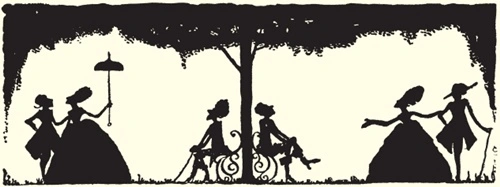He served all the arts and practised most of them. Painters, writers,
sculptors, musicians and scientists were among his friends and acquaintances. As a good civil servant he was no politician, and he never showed any leanings towards a career in the army, then
regarded as the greatest of all professions. These two deficiencies, if they can be regarded as such, simply endear him to us all the more. Everyone likes a man who deserves to enjoy life and who
does, in fact, enjoy it. Perrault was such a man, and more. He brought enjoyment to countless people during his lifetime, and his stories will continue to bring pleasure to multitudes in the
future.
It is amazing to think that Perrault was rather ashamed of his Tales of Mother Goose and had them published under the name of his young son, Pierre Darmancour. To maintain his anonymity,
Perrault abandoned his usual publisher, Coignard, and the first collected edition of the stories was published in 1697 by Barbin. They had previously appeared anonymously in the little magazine
Recueil, published in The Hague. ‘The Sleeping Beauty’ was the first, followed in quick succession by ‘Little Red Riding Hood’, ‘Puss in Boots’,
‘The Fairy’, ‘Cinderella’, ‘Riquet with the Tuft’ and ‘Tom Thumb’.
Perrault was not so reluctant to admit the authorship of his three verse stories, ‘Griselidis’ (not included in this book), ‘The Ridiculous Wishes’ and ‘Donkey
Skin’. Although the first of these had appeared anonymously in 1691, when it was reprinted in 1695, together with ‘The Ridiculous Wishes’ and ‘Donkey Skin’, it was
given to the publisher Coignard and described as being by ‘Mr Perrault, of the French Academy’, a style of attribution made popular by La Fontaine.
It would be unfair to assume that Perrault’s son had nothing to do with the composition of the stories that were attributed to him. Paul de St Victor and Andrew Lang are among those who
saw in the collection a marvellous collaboration of crabbed age and youth. The young boy probably heard the stories from his nurse and brought them to his father, who would have tweaked them and
written them down. In his fine 1886 edition of the tales Paul Lacroix goes as far as to attribute their entire authorship to Perrault’s son. However, he deferred to universal usage when he
called his volume Les Contes en Prose de Charles Perrault.
The stories were an overnight success. They had many imitators, but none of them has ever rivalled, much less surpassed the inimitable originals. They had soon made their way across the English
Channel and a translation ‘by Mr Samber, printed for J. Pote’ was advertised in the Monthly Chronicle in 1729. Mr Samber was probably Robert Samber of New Inn, London, who
translated other tales from the French for the bookseller Edmund Curll at about this time. No copy of the first edition of his translation has survived, but its wide popularity is shown by the fact
that a seventh edition was published in 1795 for the bookseller J. Rivington of New York.
Harry Clarke’s illustrations speak for themselves and for Perrault. An illustrator has seldom entered so completely into the spirit of his text. The grace, delicacy, urbanity, tenderness
and humour that went into the writing of Perrault’s stories also imbue the wonderful drawings, which would certainly have given pleasure to Perrault himself.
Acknowledgements
Song of the Mad Prince
Illustration by Harry Clarke from Fairy Tales by Hans Christian Anderson
He Saw, Upon A Bed, The Finest Sight Was Ever Beheld
Copyright © National Gallery of Ireland
Portrait of Charles Perrault
Wikipedia Commons
Portrait of Charles Perrault (1628-1703)
Contrôleur général des Bâtiments du roi, membre de l’Académie française
Paris, palais de l’Institut
© RMN / Droits réservés
All other images
Copyright © 2012 Teapot Press Ltd

Gill & Macmillan
Hume Avenue
Park West
Dublin 12
Ireland
with associated companies throughout the world www.gillmacmillanbooks.ie
© Teapot Press Ltd 2012
First published by Gill & Macmillan 2012
This ebook edition published by Gill & Macmillan 2012
Produced by Teapot Press Ltd
Introduction: Fiona Biggs
Edited by: Fiona Biggs
Designed by: Tony Potter
978 07171 5408 1 (parent)
978 07171 5661 0 (epub)
978 07171 5662 7 (mobi)
All rights reserved. No part of this publication may be copied, reproduced or transmitted in any form or by any means without permission of the publishers.
A CIP catalogue record for this book is available from the British Library.
About Gill & Macmillan
Gill & Macmillan’s story begins in 1856 when Michael Henry Gill, then printer for Dublin University, purchased the publishing and bookselling
business of James McGlashan, forming McGlashan & Gill. Some years later, in 1875, the company name was changed to M.H. Gill & Son. Gill & Macmillan as we know it today was established
in 1968 as a result of an association with Macmillan of London. There was also a bookshop, popularly known as Gills, located on Dublin’s O’Connell Street for 123 years until it
eventually closed in 1979. Today our bookshop can be found online at www.gillmacmillanbooks.ie.
Gill & Macmillan is proud to publish a broad range of non-fiction books of Irish interest, from history to economics, politics to cookery and biography
to children’s. Since 1968, we have published outstanding authors and groundbreaking books such as the Encyclopaedia of Ireland, David McWilliams’ The Pope’s
Children, Noël Browne’s Against the Tide, Garret FitzGerald’s All in a Life, Augustine Martin’s Soundings – not to mention three generations of
Ballymaloe’s Allen family on our cookery list.
We also publish a wide range of educational books and resources for all levels – primary, secondary, college and university – and we provide a
distribution service for the majority of Ireland’s independent publishers.
For more information about us, our titles, or to join our mailing list, please visit www.gillmacmillanbooks.ie.
.
1 comment